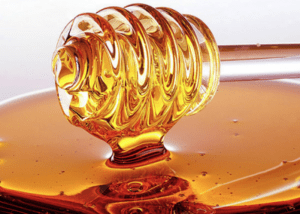 Hi everyone! I hope things are continuing to go well for you all, and if they not, chin up! It’ll get better!
Hi everyone! I hope things are continuing to go well for you all, and if they not, chin up! It’ll get better!
As I sit here waiting for my mead to hang out in secondary fermentation for about 6 weeks, I’ve noticed that it isn’t clearing up nearly as much as my other grape wines have done in the past. Of course, I haven’t added any clarifying agents to the mead, but I do remember in the past my wines have cleared up pretty well on their own if I left them to sit for a similar period of time. I see a lot of sediment at the bottom of the carboy, but the liquid is still very cloudy. Perhaps this is a trait of the mead making process?
Looking around the internet a bit, it seems as though some people are saying to just let the wine sit until its clear? This one guy several years ago on this one thread said he waited months and his mead never cleared. He was told that it might have had something to do with the type of honey that he used, and that the haziness could be related to the proteins and/or pollen in the original honey. Continue reading
Brewing Beer for Weddings & Bachelor(-ette) Parties
 I recently attended a good friend’s wedding in northern Virginia. I’d been planning for weeks to bring some homebrew to serve at his bachelor party. In addition to bringing a keg of honey basil saison, I bottled several bottles of the homebrew to give away as gifts. It was a huge success, and the keg was kicked in a matter of hours.
I recently attended a good friend’s wedding in northern Virginia. I’d been planning for weeks to bring some homebrew to serve at his bachelor party. In addition to bringing a keg of honey basil saison, I bottled several bottles of the homebrew to give away as gifts. It was a huge success, and the keg was kicked in a matter of hours.
Are you planning on brewing some beer for a wedding? Learn from my experience so you can make it a celebration to remember.
Tips for Sharing Homebrew at Weddings and Bachelor(-ette) Parties
Brew seasonally – You probably don’t want to serve an imperial stout at your friend’s wedding in August. Consider the weather and climate of the wedding and brew accordingly. Try a saison or Belgian wit in the summer. A pale ale is a good choice year round.
Continue reading
Did Degassing My Wine During Fermentation Mess It Up?
 I have mixed up two batches of white wine. Seems like the fermentation is taking way too long. After 12 days I went ahead and racked both batches. They continued bubbling and fermenting for 10 more days. I had to leave for vacation so I degassed both batches before leaving. This stopped the fermenting instantly. Did I mess up?
I have mixed up two batches of white wine. Seems like the fermentation is taking way too long. After 12 days I went ahead and racked both batches. They continued bubbling and fermenting for 10 more days. I had to leave for vacation so I degassed both batches before leaving. This stopped the fermenting instantly. Did I mess up?
Brad — FL
—–
Hello Brad,
It’s not very likely that you messed any thing up by degassing your wine while it is still fermenting. Stirring a fermentation too vigorously can shock it, but it usually reorganizes itself and starts back up again.
A fermentation actually causes a slow current of activity within the wine must, with the yeast rising and falling. The yeast will hitch a ride on the CO2 bubbles being produced. Once a bubble reaches the top, the yeast fall to the bottom again. This process occurs over again and again throughout the fermentation. Continue reading
Leigh Erwin: Sampling My Homemade Wines
 Hi everyone! I hope all your home winemaking projects are working well for you and things are running smoothly!
Hi everyone! I hope all your home winemaking projects are working well for you and things are running smoothly!
A status update first: I’m still in a “holding pattern” for my mead right now, as it’s still just hanging out in the carboy finishing up secondary fermentation. I’ve been sampling my homemade wine. I tasted the Pinot Chardonnay wine that I had made several months ago, and have tasted the Carmenere I made more recently a couple of times.
The Pinot Chardonnay is OK. Not bad, anyway. I do feel like there is something missing, and I can’t quite put my finger on it. I think it might be too heavy on the citrus flavors, and not enough floral kind of flavors that I have noticed from other Chardonnays that I’ve tasted. Of course, I can’t directly compare what my wine tastes like compared to the wine made by a professional winemaker, since our methods were likely markedly different, but still, I think mine could be improved somewhat. I’m not certain what changes I should make next time, but I’m beginning to think maybe steering away from fermenting in plastic might be the first thing I try. Thoughts?
Unfortunately, while I don’t mind drinking my Pinot Chardonnay, my fiancé doesn’t think it’s up to par to serve as at our upcoming wedding. Note: this is coming from a guy who enjoys drinking cheap boxed wine, so I was a little disappointed in my performance there. Alas, not to be discouraged, he did tell me he feels much differently about the Carmenere!
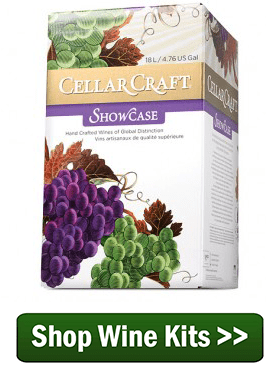 The Carmenere, in both mine and my fiance’s less-than-expert opinions, is actually showing a lot of potential right now. The flavors are starting to integrate nicely into each other, and there seems to be an extra level of complexity to the wine which I am chalking up to the fact that I added wood chips and wood cubes at two different times during the winemaking process. I didn’t filter the wine, so the last couple bottles I had come off the line had accidentally been hammered with some of the sediment from the bottle of the carboy, but we made sure to separate those from all the others and keep those for ourselves instead of serving it to someone else.
The Carmenere, in both mine and my fiance’s less-than-expert opinions, is actually showing a lot of potential right now. The flavors are starting to integrate nicely into each other, and there seems to be an extra level of complexity to the wine which I am chalking up to the fact that I added wood chips and wood cubes at two different times during the winemaking process. I didn’t filter the wine, so the last couple bottles I had come off the line had accidentally been hammered with some of the sediment from the bottle of the carboy, but we made sure to separate those from all the others and keep those for ourselves instead of serving it to someone else.
It’s been a couple weeks since I last had sampled this wine, and I’m trying hard to lay off it since a few more months or aging should only do this wine even better. Periodically, we pop one open and so far so good! My fiancé actually thinks we can get away with serving this wine at our wedding, so in addition to the “professionally made” wines we get from Trader Joe’s, we’ll serve my Carmenere as well! Fingers crossed!
Have you been sampling your homemade wines while they age? How are they coming along?
————————————————————————————————————-
 My name is Leigh Erwin, and I am a brand-spankin’ new home winemaker! E. C. Kraus has asked me to share with you my journey from a first-time dabbler to an accomplished home winemaker. From time to time I’ll be checking in with this blog and reporting my experience with you: the good, bad — and the ugly.
My name is Leigh Erwin, and I am a brand-spankin’ new home winemaker! E. C. Kraus has asked me to share with you my journey from a first-time dabbler to an accomplished home winemaker. From time to time I’ll be checking in with this blog and reporting my experience with you: the good, bad — and the ugly.
Think Twice Before Shipping Your Homemade Wine
 How do I ship some of my homemade wine from Illinois to my brother in Colorado. He tried some at a party and would like to try my other wines.
How do I ship some of my homemade wine from Illinois to my brother in Colorado. He tried some at a party and would like to try my other wines.
Name: Dan D. — IL
—–
Hello Dan,
Unfortunately, shipping wine to family, friends — or anyone for that matter — is illegal on a Federal level. This means if you are caught you could be charged with a Federal offense. As an individual, shipping or transporting alcohol across state lines for the purpose of consumption is a big no-no! This is the case regardless if you have made the wine or not. It doesn’t matter if you know the person or not.
It would be possible to ship wine to brother and friends if you were a licensed winery or alcohol distributor, but even then each state has its own rules about importing and exporting alcohol, so you would be at the mercy of both Illinois’ and Colorado’s state rules. Most of the regulations are just nonsense left over from prohibition, others are sternly there to protect the distributors and producers within their state. The home winemaker is just caught up in the broad net being thrown. Continue reading
Winemaking Terms You Should Know: Part 12
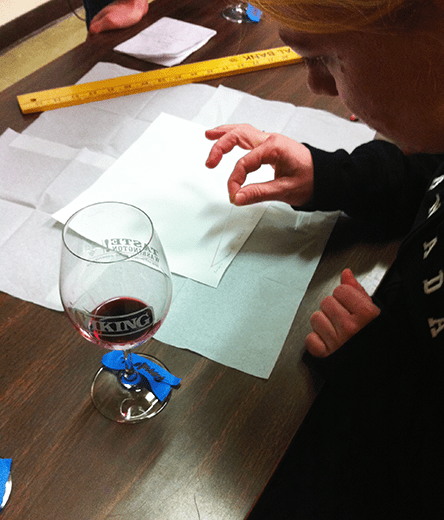 In several earlier posts, we introduced a few home winemaking terms that you may or may not be familiar with. There are many terms to learn in home winemaking, and this post, like all the previous posts, gives you a short introduction to a few of those terms to help you get started in home winemaking, or perhaps brush up on some of the terms you may not have seen in a while.
In several earlier posts, we introduced a few home winemaking terms that you may or may not be familiar with. There are many terms to learn in home winemaking, and this post, like all the previous posts, gives you a short introduction to a few of those terms to help you get started in home winemaking, or perhaps brush up on some of the terms you may not have seen in a while.
- Malolactic Fermentation: We could write a lot more on malolactic fermentation than just these few sentences, but on a very basic level, malolactic fermentation is used to convert malic acid into lactic acid, which transforms the wine from a tart, acidic wine, to a smooth, buttery finished product. In both home winemaking and professional wineries malo-lactic culture is a frequently used for a nice and slow malolactic fermentation process. Each package is enough for 6 gallons of wine, and can take anywhere from weeks to months to finish the conversion.
- Ascorbic Acid: Ascorbic acid is a commonly utilized antioxidant that is often used to prevent the grape must from oxidizing and otherwise going bad. Ascorbic acid can be used at other times during the winemaking process, including at the bottling stage. Ascorbic acid will help prevent your wine from oxidation, and will also protect against any color changes that are often associated with an oxidized wine (i.e. browning). Continue reading
Leigh Erwin: Beginner Winemaker: Wine Filter Systems
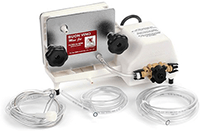 Hi guys!
Hi guys!
Here I am, still in the holding pattern while I wait for my mead to do its secondary fermentation thing!
If you remember last time, I did some preliminary research on sweetening my mead once secondary fermentation was complete, and I had asked your opinions and advice on what you think I should do that might be different from what I already found. Please feel free to continue sharing your thoughts, as it’ll not only help me, but will help others trying to figure out how to sweeten their mead wine as well.
Since I’m still in research mode, I figured today I’d chat a little bit about another thing I’ve been pondering related to my home winemaking practice: wine filter systems. If you’ve read any of my previous entries, you know I’ve been back and forth with the idea of getting a filter for my wine. My biggest problem right now has to do with space, and the fact that we will likely be moving into a new home by the end of the year and that would be one more thing I’d have to pack up and haul. Continue reading
3 Reasons Why A Homemade Wine Can Be Bitter
 In May I bottled my 2013 Riesling made from Riesling juice. Prior to bottling I filtered the wine, and added simple syrup, potassium sorbate, and kmeta, all in the correct quantities. It tasted very good at bottling time, however, now after a few months has passed, it has become drier and has a slightly bitter finish. What caused this change, and is there anything I can do now to correct it, even if I have to open all 4 cases? Also, what can be done to prevent this from happening the next time I make Riesling? Would ascorbic acid have help prevent this from happening?
In May I bottled my 2013 Riesling made from Riesling juice. Prior to bottling I filtered the wine, and added simple syrup, potassium sorbate, and kmeta, all in the correct quantities. It tasted very good at bottling time, however, now after a few months has passed, it has become drier and has a slightly bitter finish. What caused this change, and is there anything I can do now to correct it, even if I have to open all 4 cases? Also, what can be done to prevent this from happening the next time I make Riesling? Would ascorbic acid have help prevent this from happening?
Name: John S.
State: OH
—–
Hello John,
I don’t know if I have an exact answer for you or not as to why your homemade wine is bitter.
My first thought is that there is some slight fermentation going on in the wine bottle. The increase of yeast cells can make the wine bitter. But, this would be evident by bubbles or sparkle in the wine along with pressure when popping the cork. You did not mention either of these, so I doubt this is what’s going on. Continue reading
Winemaking Terms You Should Know: Part 11
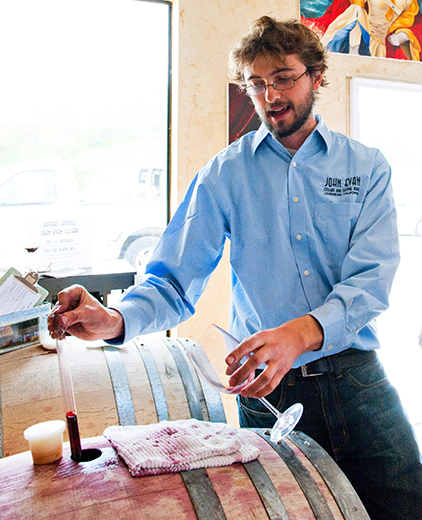 In several earlier posts, we introduced a few home winemaking terms that you may or may not be familiar with. There are many terms to learn in home winemaking, and this post, like all the previous posts, gives you a short introduction to a few of them to help you get started, or perhaps brush up on some of the home winemaking terms you may not have seen in a while.
In several earlier posts, we introduced a few home winemaking terms that you may or may not be familiar with. There are many terms to learn in home winemaking, and this post, like all the previous posts, gives you a short introduction to a few of them to help you get started, or perhaps brush up on some of the home winemaking terms you may not have seen in a while.
- Zork Corks: Starting off today’s list is something you may not be as familiar with called the Zork Cork. These are alternatives to traditional corks, and provide you with an easy option to closing all those wine bottles you’ve been working hard to create. Zork Corks can be inserted into any standard wine bottle without a corker, though depending upon how many bottles you have to close, you may want to use a rubber mallet or something similar to hammer them in just in case your fingers start getting tired. Zork Corks are made with a plastic grip top, and a professional finish, so it’s easy to insert and remove from wine bottles and makes a great presentation.
Continue reading
Filling A Growler From A Homebrew Keg
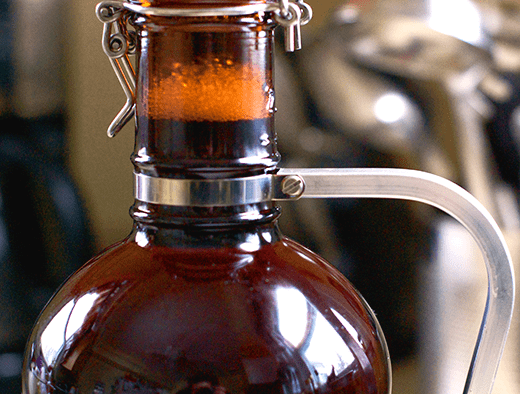 A surefire way to impress your friends is with your own homebrew draft system. But once in a while you may want to take some of your kegged beer on an adventure to a friend’s house, to the beach, or to a homebrew club meeting. Maybe you and a friend want to trade some homebrew. Maybe you want to submit some of your kegged beer to a homebrew competition.
A surefire way to impress your friends is with your own homebrew draft system. But once in a while you may want to take some of your kegged beer on an adventure to a friend’s house, to the beach, or to a homebrew club meeting. Maybe you and a friend want to trade some homebrew. Maybe you want to submit some of your kegged beer to a homebrew competition.
Filling your homebrew keg is a piece of cake, but filling a growler from a homebrew keg can be a challenge. How do you trap all that precious carbonation inside the growler without it foaming out and going flat?
Just follow these six easy steps for filling a growler from your homebrew keg:
- Clean your growler. If it’s already clean, this may be as easy as a hot water rinse. A dirtier growler may need to be soaked in One Step. If you plan on storing it for any length of time (more than a day or two), you should sanitize it as well. Do forget to clean the cap, too! Continue reading
